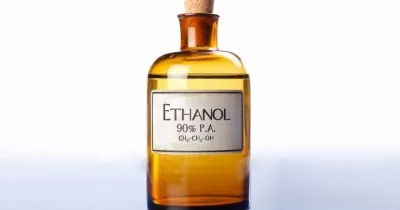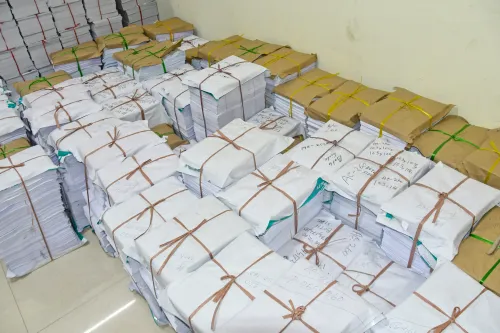Has the Government Opened the Door for 2G Ethanol Exports?

Synopsis
Key Takeaways
- The DGFT has revised regulations to allow 2G ethanol exports.
- 2G ethanol is derived from non-food sources, promoting sustainability.
- Export requires valid authorizations and feedstock certificates.
- India's ethanol blending target has been advanced to 2025-26.
- Government initiatives support feedstock availability for production.
New Delhi, Sep 24 (NationPress) The Directorate General of Foreign Trade (DGFT) has recently revised India's export regulations to permit the exportation of second-generation (2G) ethanol.
2G ethanol, or ethyl alcohol, is derived from non-food sources such as bagasse, wood waste, agricultural byproducts, grasses, algae, and other sustainable materials. This type of ethanol is recognized as environmentally friendly as it generates lower carbon dioxide emissions and does not compete with food crops for land.
The latest DGFT notification, which introduces a new export requirement for second-generation ethanol, takes effect immediately.
According to the new rules, exports will only be allowed if companies possess a valid Export Authorisation and a feedstock certificate from the appropriate authority. This policy applies to ethanol classified under ITC(HS) Code 22072000, which encompasses ethyl alcohol and other denatured spirits.
In related developments, the blending of ethanol with petrol by public sector oil companies in India surged to 19.93 percent in July this year, resulting in an average of 19.05 percent for the current ethanol supply year (ESY) 2024–25.
The government has been actively promoting the blending of ethanol with petrol through the Ethanol Blended Petrol (EBP) Programme, where Public Sector Oil Marketing Companies (OMCs) such as Indian Oil, Bharat Petroleum, and Hindustan Petroleum sell ethanol-blended petrol.
The national goal of achieving a 20 percent ethanol blend in petrol has been moved up from 2030 to the Ethanol Supply Year (ESY) 2025-26 due to rapid advancements in the sector.
To ensure a sufficient supply of feedstock for ethanol production and meet the 20 percent blending target by ESY 2025-26, the government has implemented several initiatives. These include expanding the range of feedstock for ethanol production and establishing maize clusters near ethanol plants to boost maize production in areas surrounding grain-based distilleries.
Additionally, the government has sanctioned the allocation of 52 lakh metric tonnes (LMT) of surplus rice from the Food Corporation of India (FCI) for ethanol production, designated for the ESY 2024-25 (from November 1, 2024, to October 31, 2025) and ESY 2025-26 until June 30, 2026. Furthermore, the diversion of 40 LMT of sugar for ethanol production has been authorized for the ESY 2024-25.









